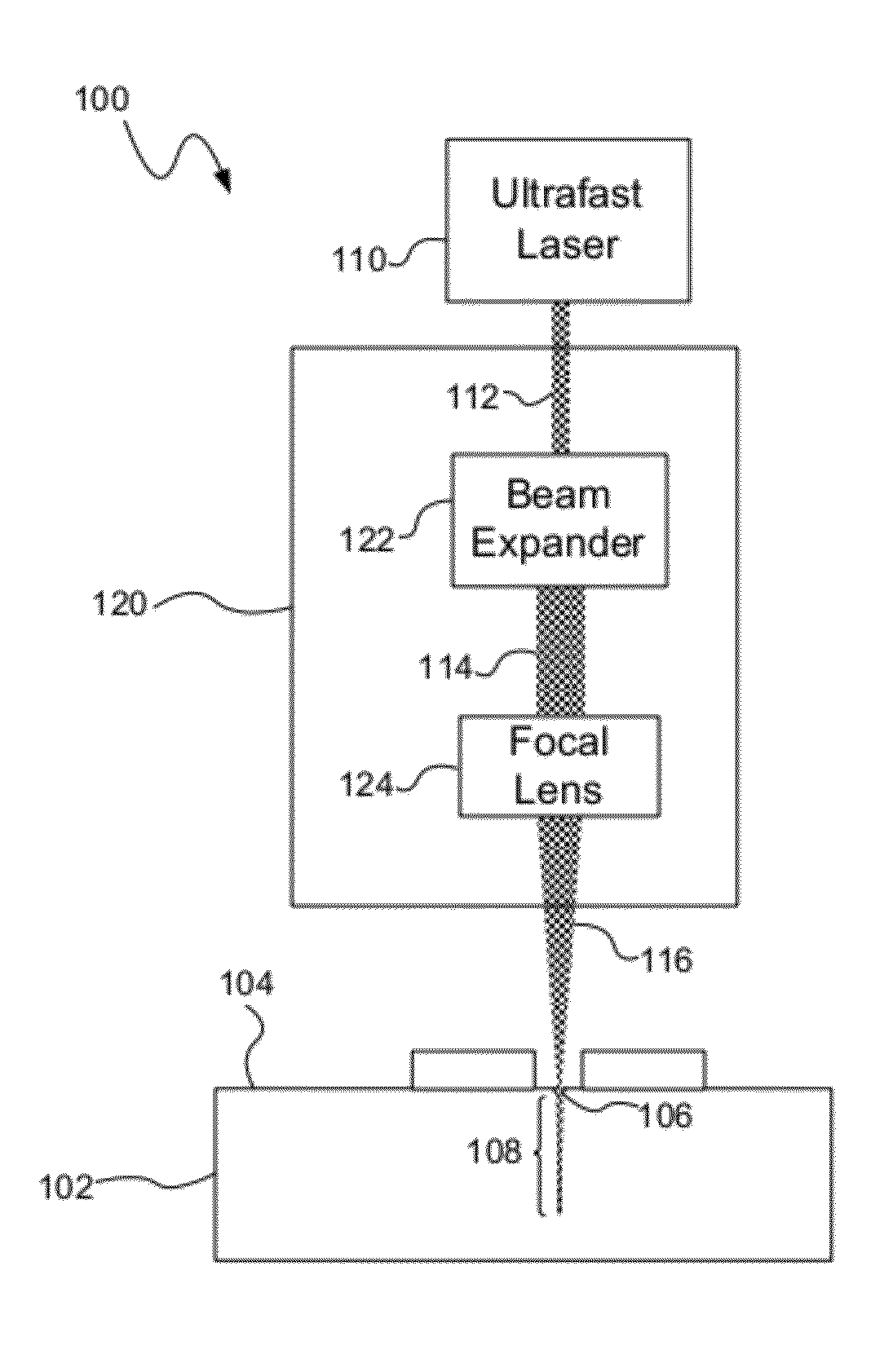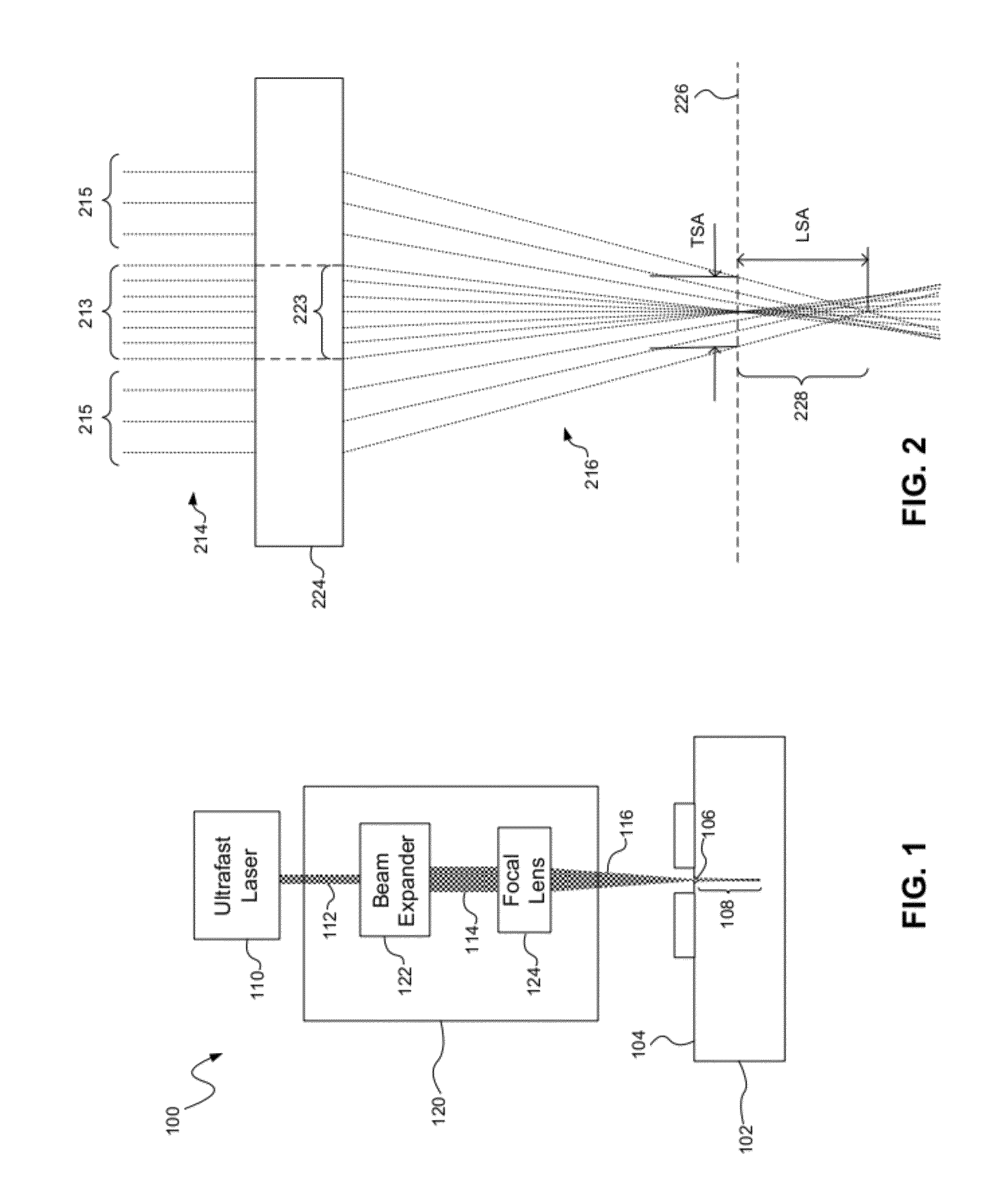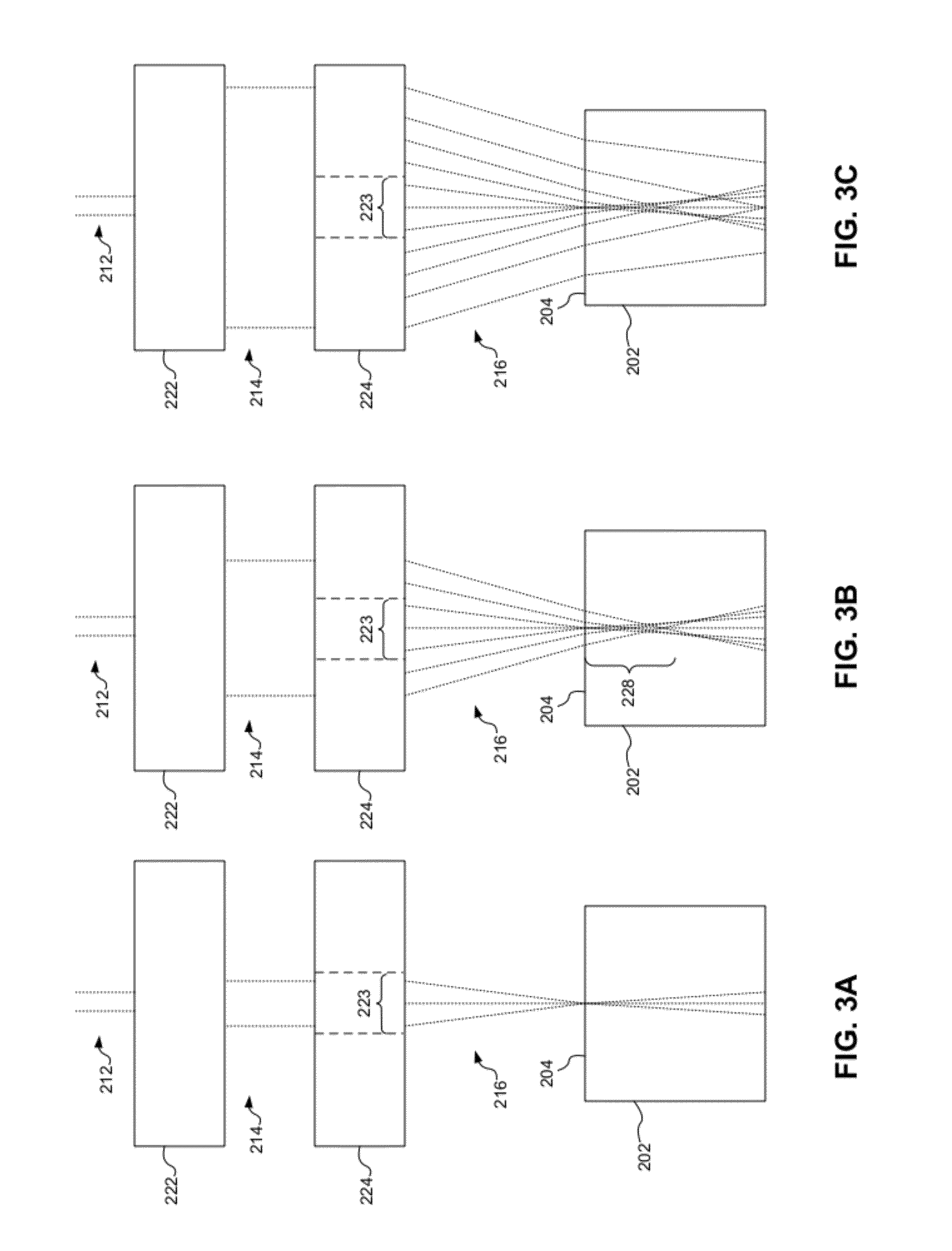Laser scribing with extended depth affectation into a workplace
a technology of scribing and workpieces, applied in the field of laser machining, can solve the problems of epi damage and light loss, narrower streets between devices, and significant debris generation
- Summary
- Abstract
- Description
- Claims
- Application Information
AI Technical Summary
Problems solved by technology
Method used
Image
Examples
Embodiment Construction
[0023]Systems and methods for laser scribing, consistent with embodiments of the present disclosure, provide extended depth affectation into a substrate or workpiece by focusing a laser beam such that the beam passes into the workpiece using a waveguide, self-focusing effect to cause internal crystal damage along a channel extending into the workpiece. Different optical effects may be used to facilitate the waveguide, self-focusing effect, such as multi-photon absorption in the material of the workpiece, transparency of the material of the workpiece, and optical aberrations of the focused laser beam. The laser beam may have a wavelength, pulse duration, and pulse energy, for example, to provide transmission at least partially through the material and multi-photon absorption in the material. An aberrated, focused laser beam may also be used to provide a longitudinal spherical aberration range sufficient to extend the effective depth of field (DOF) into the workpiece.
[0024]Laser scrib...
PUM
| Property | Measurement | Unit |
|---|---|---|
| focal length | aaaaa | aaaaa |
| kerf width | aaaaa | aaaaa |
| focal depth | aaaaa | aaaaa |
Abstract
Description
Claims
Application Information
 Login to View More
Login to View More - R&D
- Intellectual Property
- Life Sciences
- Materials
- Tech Scout
- Unparalleled Data Quality
- Higher Quality Content
- 60% Fewer Hallucinations
Browse by: Latest US Patents, China's latest patents, Technical Efficacy Thesaurus, Application Domain, Technology Topic, Popular Technical Reports.
© 2025 PatSnap. All rights reserved.Legal|Privacy policy|Modern Slavery Act Transparency Statement|Sitemap|About US| Contact US: help@patsnap.com



